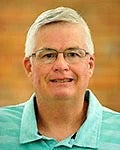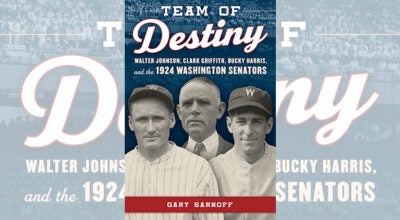Time for USA hockey to fix what’s broken
Published 5:18 pm Tuesday, October 4, 2016

- Washington quarterback Frederick Holscher rolls out of the pocket against Kinston. Coach Sport Sawyer the Pam Pack proved they’re not stubborn when they reverted to a more ground-based attack after a slow offensive start to the year.
Hockey fans across the nation and around the world got some fun, awe-inspiring action to watch ahead of the early-October start the NHL season. American fans were left clinging to an exciting Under-23 North America team as the USA national team was ousted quickly following a 4-2 loss to eventual champion Canada on Sept. 20.
USA management stood by its mantra of grit over skill in picking John Tortorella to coach the team, and in its assembling of the team itself. Phil Kessel is hot off helping lead the Pittsburgh Penguins to a Stanley Cup, but was sitting on his couch as Canada bounced the Americans from the tournament. Also left off the team were skilled players in Kyle Okposo, Tyler Johnson, Kevin Shattenkirk, Cam Fowler and Carolina Hurricanes stud Justin Faulk.
Of course, other top-notch youngsters were unavailable due to the aforementioned Team North America. The future additions of Jack Eichel, Seth Jones, Johnny Gaudreau and Auston Matthews will bolster the USA.
At its core, though, USA’s problem is a philosophical one. The system of grit, favoring the peskier players over raw skill, hasn’t worked since the Americans earned the silver medal in an overtime loss to Canada in the 2010 Vancouver Winter Olympics. Problems with the strategy behind building the team became apparent in Sochi at the 2014 Winter Olympics when USA was shutout in the semifinals against Canada and then again by Finland in the bronze-medal match.
When there are glaring problems like that time and again, something has to change. USA’s management sticking by this game plan is simply stubborn. Not only is it not working, but the teams that succeeded in these tournaments did so by assembling an all-star cast of skill players.
Washington’s football team learned a similar lesson. Rather than stubbornly sticking to its guns, coach Sport Sawyer and his staff revamped the team’s offense to accommodate for an inexperienced offensive line and a new quarterback in Frederick Holscher.
The Pam Pack strayed from its wing-T scheme in favor of something that covers the weaknesses up front and lets Holscher use his arm. However, when that wasn’t working out and Washington was walloped in its first three games, Sawyer and company returned to a more familiar run-first system.
Washington is still searching for its first win, but the changeup has worked well for the offense. It only scored once in its first three games. In the three outings since, the Pam Pack has played a pair of one-possession games — one in a rallying effort at Roanoke Rapids and another in a three-point shortcoming against Plymouth.
The pieces are slowly coming together. Holscher threw his first touchdown pass this past Friday. He’s steadily coming into his own and adding a new wrinkle to the offense.
A philosophical change like that for the national hockey team might lead to similar growing pains, but it surely beats the stunning lack of success over the past six years.




